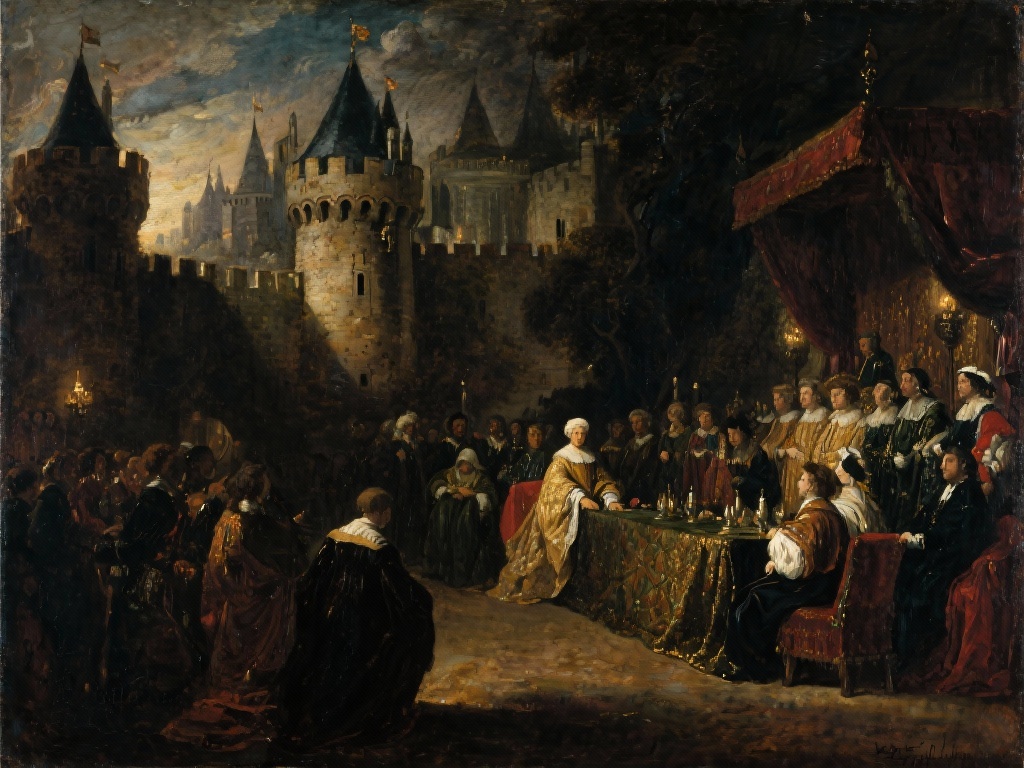When you think about disasters in London’s history, your mind probably jumps to the Great Fire of 1666. But here’s what most people don’t realize: the Tudor period (1485-1603) experienced far more devastating catastrophes that claimed thousands more lives and fundamentally changed how London developed as a city.
During the 118 years of Tudor rule, London faced mysterious diseases that killed within hours, plagues that wiped out a quarter of the population, building collapses that became tragically routine, and floods that repeatedly threatened the growing city. These disasters weren’t just historical footnotes—they shaped everything from urban planning to social policy in ways that still influence London today.
What Were the Most Devastating Disasters in Tudor London?
Understanding Tudor Period Disasters
The Tudor era brought unique challenges to London that you won’t find in other historical periods. Unlike the well-documented Great Fire of 1666, many Tudor disasters have been overshadowed by later events, even though they were often more deadly and far-reaching in their consequences.
What made Tudor disasters particularly devastating was London’s rapid growth during this period. The city’s population exploded from around 50,000 in 1485 to nearly 200,000 by 1603, creating overcrowded conditions that turned manageable problems into full-scale catastrophes.
Types of Catastrophes That Struck London
Tudor London faced an almost relentless series of disasters that fell into several distinct categories. Epidemic diseases topped the list of killers, with the mysterious sweating sickness exclusively terrorizing England and plague outbreaks that made later epidemics look modest by comparison.
Infrastructure failures proved surprisingly deadly, with building collapses actually claiming more lives than fires during most of the Tudor period. The city’s rapid construction boom, combined with experimental building techniques and poor-quality materials, created a perfect storm for structural disasters.
Natural disasters including Thames flooding, severe storms, and even earthquakes in the 1580s regularly disrupted life and commerce. The Thames, which hadn’t yet been properly contained by embankments, posed a constant flood threat that sometimes turned deadly.
The Sweating Sickness Epidemics That Terrorized Tudor England
What Was the Mysterious Sweating Sickness?
Imagine a disease so swift and deadly that healthy people could be struck down within two hours of showing symptoms. That was sweating sickness, a mysterious illness that appeared exclusively in England and remains unexplained by modern medicine.
The disease first struck London in 1485, just as Henry VII was establishing the Tudor dynasty. Within six weeks, 15,000 people died out of London’s population of just 50,000—a staggering 30% mortality rate that makes modern pandemics look tame by comparison.
What made sweating sickness particularly terrifying was its unpredictability. Unlike plague, which primarily affected the poor, this disease struck rich and poor alike with equal ferocity. Symptoms included sudden onset of fever, profuse sweating, chest pains, and vomiting, followed by death within 24 hours—or sometimes in as little as two hours.
How the Disease Struck All Social Classes

The sweating sickness shattered Tudor society’s assumptions about disease and social status. While plague typically ravaged overcrowded, unsanitary neighborhoods where the poor lived, sweating sickness invaded royal courts and noble households with the same deadly efficiency it showed in common lodgings.
This equal-opportunity killer forced the entire social hierarchy to confront their mortality together. Wealthy merchants who thought their clean homes and good food protected them found themselves just as vulnerable as the poorest laborers. The psychological impact was profound—no amount of money or status could buy safety from this mysterious destroyer.
The Five Major Sweating Sickness Outbreaks
The sweating sickness struck England in five major waves, each one reminding Londoners that their mysterious enemy could return without warning:
After 1551, the sweating sickness vanished as mysteriously as it had appeared, never to return. This sudden disappearance has puzzled historians and medical researchers for centuries, adding to the disease’s enigmatic legacy.
The Catastrophic 1563 Plague Outbreak Under Elizabeth I
London’s Worst Plague Epidemic of the 16th Century
While the Great Plague of 1665 gets all the historical attention, the 1563 outbreak under Elizabeth I was actually far more devastating relative to London’s population. This epidemic killed at least 20,136 people in London and surrounding parishes—and that’s just from the recorded deaths.
The outbreak began in the overcrowded parishes near the city walls and along the Thames, where sanitation was poorest and living conditions most cramped. From there, it spread relentlessly through the city, sparing no neighborhood and claiming victims from every social class.
How 24% of London’s Population Perished
The mathematics of the 1563 plague are staggering. With London’s population estimated at around 85,000, the confirmed death toll of over 20,000 represents approximately 24% of the entire population. This mortality rate exceeded later plague outbreaks in 1593, 1625, and even the famous 1665 Great Plague.
What made this outbreak so deadly was the city’s complete lack of preparation. London had no effective quarantine measures, no understanding of disease transmission, and no organized medical response. Families simply watched helplessly as the disease moved through their neighborhoods like a slow-motion apocalypse.
The Spread from Unsanitary Parishes to Central London
The 1563 plague followed a predictable pattern that would repeat in later outbreaks. It began in the poorest parishes outside the city walls, where waste disposal was primitive and overcrowding extreme. Areas like Whitechapel and Shoreditch, already struggling with poverty and poor sanitation, became death traps.
From these outlying areas, the plague spread inward toward the city center, carried by refugees fleeing the worst-affected neighborhoods. This movement pattern ensured that virtually no part of London escaped the epidemic’s reach, though the wealthy areas closer to the Thames and the city center initially fared somewhat better due to better living conditions.
Tudor London’s Infrastructure Disasters and Building Collapses
Why Tudor Buildings Collapsed More Than They Burned

Here’s a surprising fact that challenges everything you might think about Tudor London: building collapses actually killed more people than fires during most of the Tudor period. Despite all the timber construction and open flames, structural failures proved the deadlier enemy.
The reason lies in Tudor London’s construction boom and experimental building techniques. As the city’s population exploded, builders rushed to construct new housing using innovative methods that weren’t always thoroughly tested. The combination of rapid construction, inexperienced workers, and cost-cutting measures created a recipe for disaster.
Construction accidents comprised 14% of all work-related deaths during the Tudor period, making building sites some of the most dangerous places in the city. Workers faced daily risks from unstable scaffolding, falling timber, and experimental lifting techniques that sometimes failed catastrophically.
Dangerous Timber-Framed Construction Accidents
Tudor builders relied heavily on timber-framed construction, which required complex joinery and careful engineering to create stable structures. However, the pressure to build quickly and cheaply often led to shortcuts that proved deadly.
The use of rollers and primitive lifting equipment to move heavy timber beams created particular hazards. When these systems failed, workers and passersby could be crushed by massive oak beams that weighed hundreds of pounds. The lack of safety protocols meant that one small mistake could turn a construction site into a death trap.
Many accidents occurred during the raising of timber frames, when entire wall sections had to be lifted into place by teams of workers. If the coordination failed or the timber joints weren’t properly prepared, the entire structure could collapse, potentially killing everyone nearby.
Chimney Collapses and Brick Technology Failures
The Tudor period saw London’s transition from wood to coal heating, which required new chimney designs and construction techniques. Unfortunately, early Tudor brick technology couldn’t handle the increased temperatures, leading to frequent and dangerous chimney failures.
Wood fires burn at around 1,000°C, while coal fires reach 1,200°C—a difference that proved too much for early Tudor bricks and mortar. Chimneys would crack, crumble, or collapse entirely, sometimes bringing down entire sections of buildings and killing the inhabitants below.
These technological growing pains cost lives throughout the Tudor period as builders slowly learned to create chimneys that could handle coal’s higher temperatures. The transition period was particularly dangerous, as many buildings had chimneys built for wood fires but were being used to burn coal.
Thames Flooding and London Bridge Disasters During Tudor Times
Recurring Thames Flood Threats to Tudor London
The Thames River posed a constant threat to Tudor London that modern Londoners, protected by the Thames Barrier and proper embankments, can barely imagine. Regular tidal surges from the North Sea could send water rushing through the city’s streets with little warning.
These floods had been plaguing London since 1099, but the Tudor period’s rapid urban development made them increasingly dangerous. As more people crowded into areas near the river, what had once been manageable flooding became life-threatening disasters that could trap entire neighborhoods.
The lack of proper flood defenses meant that high tides, storm surges, or heavy rainfall upstream could quickly overwhelm the city’s primitive drainage systems. Streets would become rivers, basements would flood, and people could be swept away by the rushing water.

London Bridge Structural Failures and Fire Risks
London Bridge during the Tudor period was essentially a small town built on water, lined with shops, houses, and businesses that created both incredible crowding and constant fire danger. The bridge carried the additional burden of being the only major crossing point for the Thames, making it a critical but vulnerable piece of infrastructure.
The most devastating bridge disaster occurred in 1212, just before the Tudor period, when the Great Fire of London Bridge killed over 3,000 people. The wooden shops and houses on the bridge caught fire, trapping people between the flames on one side and the river on the other. This disaster led to rebuilding the bridge in stone, but fire risks remained throughout the Tudor era.
The bridge had previously been destroyed by flames in 1135 and had suffered various structural failures over the centuries. Its narrow archways created dangerous currents that made river navigation treacherous, leading to regular boat accidents and drownings.
Government Responses to Tudor London’s Disasters
How Tudor Monarchs Handled Public Health Crises
Tudor monarchs typically responded to disasters with a combination of flight and limited emergency measures. During plague outbreaks, the royal court would quickly evacuate to safer locations—Queen Elizabeth I famously fled to Windsor Castle during the 1592-1593 plague by August 1593, leaving London’s officials to handle the crisis.
This pattern of royal evacuation wasn’t just self-preservation; it reflected the Tudor understanding that government continuity was essential for the realm’s survival. However, it also left London’s population feeling abandoned during their worst crises, creating resentment that sometimes boiled over into social unrest.
Emergency Measures During Epidemic Outbreaks
When disasters struck, Tudor authorities implemented whatever emergency measures they could with their limited resources and understanding. During plague outbreaks, they attempted quarantine measures, though these were often ineffective due to poor enforcement and lack of medical knowledge.
The government struggled particularly with overcrowded and unsanitary conditions that made disasters worse. Limited firefighting capabilities consisted mainly of hand-pump engines and military assistance, which proved inadequate for major fires or building collapses.
Urban Planning Changes After Major Disasters
Each major disaster taught Tudor authorities hard lessons about urban planning and disaster preparedness. After particularly devastating building collapses, new construction regulations were sometimes implemented, though enforcement remained spotty.
The repeated plague outbreaks gradually led to better understanding of the connection between sanitation and disease, though real improvements wouldn’t come until later centuries. Similarly, fire disasters led to gradual improvements in building techniques and fire prevention measures.
The Social and Economic Impact of Tudor Disasters
How Disasters Affected Different Social Classes
Tudor disasters revealed the stark inequalities of English society while sometimes serving as great equalizers. The sweating sickness uniquely affected all social classes equally, creating shared terror across the social spectrum. However, most other disasters hit the poor hardest.

During plague outbreaks, wealthy families could flee to country estates, while the poor remained trapped in overcrowded, unsanitary conditions where disease spread fastest. Building collapses more often occurred in hastily constructed housing for the poor, while flooding disproportionately affected riverside areas where the poorest Londoners lived.
Economic Disruption from Repeated Catastrophes
The economic impact of Tudor disasters was profound and long-lasting. The 1551 sweating sickness outbreak caused such panic that shops closed and business was suspended throughout London. Trade ground to a halt as merchants and customers alike fled or died.
These disruptions had ripple effects throughout England’s economy, as London was becoming the commercial heart of the realm. When London’s economy suffered, the entire country felt the impact through disrupted trade, lost tax revenue, and reduced agricultural demand.
Long-term Changes to London’s Urban Development
Tudor disasters fundamentally shaped how London developed as a city. The repeated building collapses led to gradual improvements in construction techniques and safety regulations. Fire disasters influenced building materials and urban layout decisions.
Perhaps most importantly, the disasters contributed to London’s growing problems with urban squalor, vagrancy, and poverty as the city’s population reached unprecedented levels by 1600. These challenges would persist well beyond the Tudor period and influence London’s development for centuries to come.
Common Questions About Tudor London’s Great Disasters
Which Tudor Disaster Killed the Most People?
The 1563 plague outbreak under Elizabeth I holds the grim record as the deadliest single Tudor disaster, with its 24% population mortality rate exceeding even the famous Great Plague of 1665. However, if you consider cumulative deaths, the five sweating sickness outbreaks combined may have claimed even more lives over the full Tudor period.
Why Were Tudor Buildings So Prone to Collapse?
Tudor buildings collapsed frequently due to a combination of rapid construction, experimental techniques, poor-quality materials, and inexperienced workers. The city’s population boom created enormous pressure to build quickly and cheaply, often sacrificing safety for speed and profit.
How Did Tudor Londoners Prepare for Disasters?
Disaster preparedness in Tudor London was extremely limited compared to modern standards. The wealthy could evacuate to country estates during epidemics, while the poor had few options beyond prayer and hope. The city lacked organized emergency services, effective medical responses, or comprehensive disaster planning that we take for granted today.
The Tudor period’s disasters offer sobering lessons about urban growth, public health, and social inequality that remain relevant today. These catastrophes shaped London into the resilient city it became, though the human cost was enormous and the lessons were learned through tremendous suffering.
